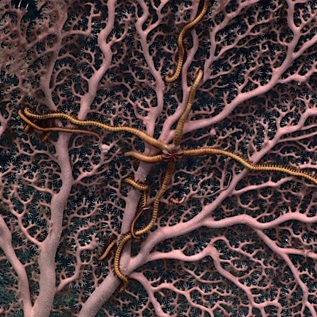The Galápagos Islands are more than 1,100 kilometers from the coast of Ecuador in the Pacific Ocean. This world-renowned ecosystem is known as the “living laboratory of evolution,” provides a critical refuge for migratory species, and hosts some of the world’s highest levels of endemism—species found nowhere else on the planet.
The Galápagos are made up of 19 isolated volcanic islands. Their remote location provided the ideal environment for the evolution of unique species including the world’s only marine iguanas, the northernmost penguin species, and world-famous mockingbirds and finches.
The land protections in the Galápagos are well known. The Galápagos National Park, which covers 97 percent of the islands’ land area, harbors giant tortoises, lava lizards, and distinctive bird species such as blue-footed boobies. The islands’ iconic surrounding waters, located at the convergence of several major ocean currents, create an upwelling of cold, nutrient-dense water, which draws an estimated 3,000 species including whales, dolphins, sharks, sea lions, rays, sea turtles, tuna, and tropical fish. These factors also make the islands one of the world’s premier scuba diving destinations.
The Galápagos Marine Reserve (GMR), declared in 1998 and covering 133,000 square kilometers, prohibits extractive activities in certain areas while allowing artisanal fishing in others. The people of the Galápagos rely on the health of this ecosystem to catch lobsters, grouper, tuna, and other species and to earn income from a robust tourism industry focused on wildlife observation, snorkeling, and scuba diving.
Despite the Galápagos’ abundance of ecological riches, they are not immune from the global threats to habitat loss and overall ocean health. The strong protections afforded by the GMR have allowed fish populations to rebuild but have also attracted foreign fleets that illegally benefit from the reserve’s success.
The Pew Bertarelli Ocean Legacy Project is working to support increased protections to safeguard one of the world’s most iconic marine ecosystems.
Pew Bertarelli Ocean Legacy Project
The Pew Charitable Trusts and Dona Bertarelli created the Pew Bertarelli Ocean Legacy Project, with the shared goal of establishing the first generation of ecologically significant, large, and effective marine protected areas (MPAs) around the world. Today, the Pew Bertarelli Ocean Legacy Project also seeks to connect MPAs and help conserve key migratory species and entire marine ecosystems. These efforts build on more than a decade of work by Pew and the Bertarelli Foundation, led by Dona Bertarelli, to create large-scale, highly or fully protected MPAs. Between them, they have helped to obtain designations or commitments to safeguard nearly 12.6 million square kilometers (4.8 million square miles) of ocean by working with communities, local leaders, philanthropic partners, Indigenous groups, government officials, and scientists. Dona Bertarelli is a philanthropist, investor, sportswoman, and strong advocate for ocean conservation. The Pew Charitable Trusts is driven by the power of knowledge to solve today’s most challenging problems, including the need for effective marine conservation.




